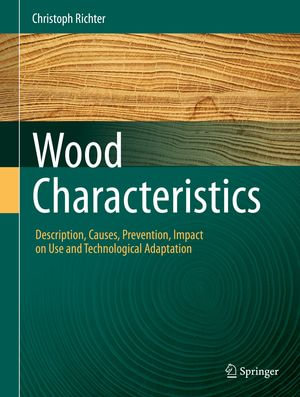
Wood Characteristics
Description, Causes, Prevention, Impact on Use and Technological Adaptation
eText | 10 November 2014
At a Glance
eText
$159.01
or
Instant online reading in your Booktopia eTextbook Library *
Read online on
Desktop
Tablet
Mobile
Not downloadable to your eReader or an app
Why choose an eTextbook?
Instant Access *
Purchase and read your book immediately
Read Aloud
Listen and follow along as Bookshelf reads to you
Study Tools
Built-in study tools like highlights and more
* eTextbooks are not downloadable to your eReader or an app and can be accessed via web browsers only. You must be connected to the internet and have no technical issues with your device or browser that could prevent the eTextbook from operating.
ISBN: 9783319074221
ISBN-10: 3319074229
Published: 10th November 2014
Format: PDF
Language: English
Audience: General Adult
Publisher: Springer Nature
Country of Publication: US
You Can Find This eBook In
Non-FictionEngineering & TechnologyMechanical Engineering & MaterialsMaterials ScienceNature & The Natural WorldTrees, Mushrooms, Wildflowers & PlantsIndustrial Chemistry & Manufacturing TechnologiesTimber & Wood ProcessingAgriculture & FarmingForestry & Silviculture Practice & TechniquesEarth Sciences, Geography, Environment, PlanningEarth Sciences
This product is categorised by
- Non-FictionEngineering & TechnologyMechanical Engineering & MaterialsMaterials Science
- Non-FictionNature & The Natural WorldTrees, Mushrooms, Wildflowers & Plants
- Non-FictionEngineering & TechnologyIndustrial Chemistry & Manufacturing TechnologiesTimber & Wood Processing
- Non-FictionEngineering & TechnologyAgriculture & FarmingForestry & Silviculture Practice & Techniques
- Non-FictionEarth Sciences, Geography, Environment, PlanningEarth Sciences
- Non-FictionEarth Sciences, Geography, Environment, PlanningGeographyBiogeography
- Non-FictionNature & The Natural WorldThe Earth & Natural History in General
- Non-FictionScienceBiology, Life SciencesLife Sciences in GeneralEcological Science
























